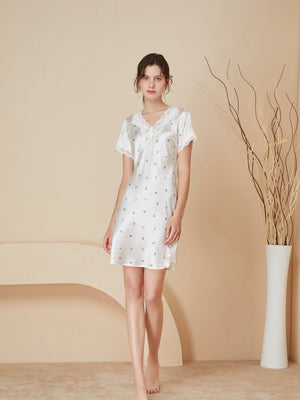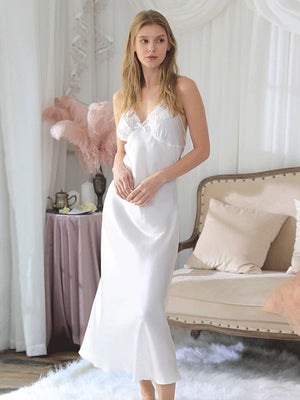Plain White Silk Wedding Dress: Timeless Elegance for the Modern Bride
- by wangfred
-

In a world of ever-changing bridal trends, the plain white silk wedding dress stands as a beacon of classic beauty. Its understated charm and luxurious fabric have captivated brides for centuries, offering a canvas for personal expression while honoring tradition. Whether you envision a minimalist ceremony or a grand celebration, this iconic gown whispers of romance and refinement.
The History of Silk in Bridal Fashion
Silk has been synonymous with bridal elegance since ancient civilizations. Chinese empresses, Roman nobility, and European royalty draped themselves in silk for ceremonies, symbolizing wealth and divine connection. The Victorian era solidified white silk as the quintessential wedding fabric, popularized by Queen Victoria’s groundbreaking ivory silk satin gown in 1840. Modern designers continue this legacy, using silk’s natural drape to create silhouettes that flatter every body type while maintaining historical reverence.
Why Silk Reigns Supreme
The magic of plain white silk lies in its biological origins. As the only natural filament fiber, silk threads can span up to 1,600 yards from a single cocoon. This creates fabric with:
- Natural temperature regulation for comfort in any season
- Hypoallergenic properties sensitive skin appreciates
- Light-reflecting qualities that create a luminous glow
- Durability that withstands generations of preservation
Modern Interpretations
Contemporary brides are redefining simplicity through innovative cuts and details. Slender column dresses with plunging backlines showcase silk’s fluid movement, while architectural boat necks and cap sleeves demonstrate its structural potential. Many opt for removable overskirts or detachable trains that transform their look from ceremony to reception. The true power of a plain white silk dress emerges in its adaptability – it serves as both a blank slate for bold accessories and a standalone statement of purity.
Sustainability Considerations
Environmentally-conscious couples increasingly prioritize sustainable silk options. Peace silk production allows moths to emerge from cocoons before harvesting, while organic farming practices eliminate harmful chemicals. A well-crafted silk dress often becomes an heirloom piece, with 68% of brides reporting they preserve their gowns for future generations. This longevity makes silk an eco-friendly choice compared to synthetic alternatives that may shed microplastics.
Styling Secrets
Enhance your silk gown’s radiance with these professional tips:
- Apply moisturizer the night before to create a glowing skin canvas
- Choose pearl-encrusted hair pins that catch light like silk threads
- Opt for minimalist makeup with dewy finishes
- Select footwear that complements silk’s sheen – satin pumps or metallic sandals
Cultural Significance
Across global traditions, white silk carries profound meaning. In Japanese Shinto ceremonies, white represents the death of a woman’s family allegiance before rebirth into her husband’s lineage. Indian brides often layer silk saris over contemporary gowns to honor ancestral customs. Western cultures view the plain white silk dress as both a feminist statement and romantic ideal, embodying the complex duality of modern womanhood.
Preservation Techniques
Protect your investment with proper care:
- Have the dress professionally cleaned within two weeks of wear
- Store in acid-free tissue within a breathable cotton garment bag
- Avoid plastic storage that traps moisture
- Inspect annually for potential yellowing
As moonlight illuminates silk’s pearlescent threads, so does the plain white silk wedding dress reveal the radiant essence of bridal beauty. This fabric of legends continues to write new chapters in love stories, offering brides a tactile connection to history while stepping boldly into their futures. In choosing silk, you’re not just selecting a dress – you’re embracing an eternal symbol of love’s transformative power, ready to be passed down as both artifact and inspiration for generations of romance yet to unfold.












